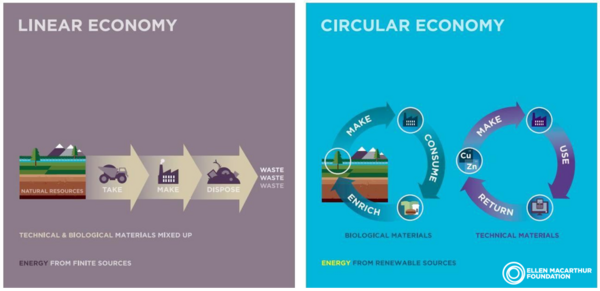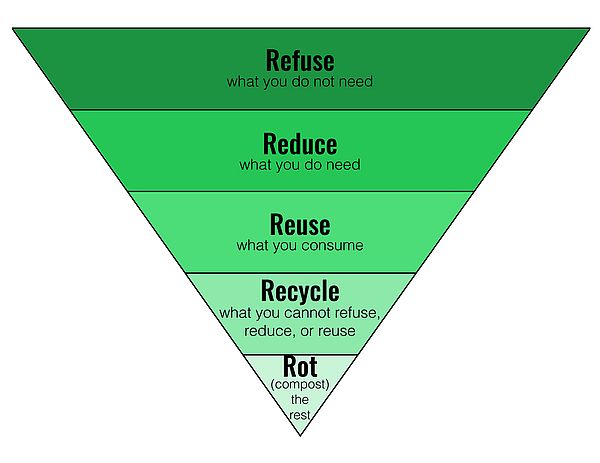Zero Waste
According to Global Footprint Network, the human race is consuming resources faster than the Earth can replenish them. “Today humanity uses the equivalent of 1.7 Earths to provide the resources we use and absorb our waste. This means it now takes the Earth one year and six months to regenerate what we use in a year.”
In the United States, this number is even greater. According to a 2008 report from Global Footprint Network, if everyone in the world lived like the average United States citizen, we would need 4.6 Earths to replenish the resources used and absorb the waste generated in a year.
Living in this “ecological debt” cannot last forever. World Resources Institute estimates that 85% of the world’s forests have been cleared, degraded, or fragmented, leaving only 15% intact. A 2010 report from the United Nations stated, “80 percent of the world’s fish stocks for which assessment information is available are reported as fully exploited or overexploited.” The planet’s resources are finite, and if we continue to extract and consume at a rate greater than the Earth can replenish itself, we will eventually run out of virgin materials to extract.
Extraction and resource depletion occurs, in large part, to obtain materials for consumer goods. Many of these consumer goods are single-use items; objects we use once, then throw away. Most of the material goods that flow into North American markets get discarded (The Story of Stuff). This figure includes the “upstream waste” (waste generated during extraction, manufacturing, and production of items), as well as the consumer goods, themselves, that are thrown away.
To put it simply: we are quickly depleting the Earth’s natural resources in order to create materials that are immediately thrown away. Learn more about what happens to our waste and the impacts of various waste management strategies.
The Zero Waste Solution
Zero Waste challenges this incredibly inefficient system by encouraging people to live in a way that produces as little trash as possible. Instead of promoting a linear system (where things are made, then disposed of), the zero waste philosophy pushes for a circular system that mimics nature’s cyclical processes, in which nothing is wasted and every resource is recycled.
In nature, there is no such thing as waste. Natural materials grow, die, and decompose in a way that allows them to be completely recycled back into the ecosystem. For example, when a leaf dies in a forest, it decays into humus, which enriches the soil and feeds new growth. Zero waste strives to create a system that mirrors this. This can be done in two steps:
Consume less overall, so that we stop extracting resources at a faster rate than the Earth can replenish.
- Help the Earth replenish the extracted resources by only consuming goods that can be fully recycled back into the market and/or ecosystem.
Achieving Zero Waste
Because we live within a linear system, it is important to note that zero waste is a concept; it is impossible to live within the system and send absolutely nothing, ever, to landfill. And zero waste is much more than keeping your trash bin empty. Zero waste is about taking steps to reduce your impact. It is about recognizing that our system is broken, and doing something to work toward fixing it. It is about partaking in a movement that believes in and fosters true sustainability.
Think of the “zero” in “zero waste” not as a numerical measurement, but as a circle symbolizing nature’s cyclical processes. Anyone who understands that our linear system is problematic and wants to do something to change it is already a part of the zero waste movement.
Getting Started
Bea Johnson, author of Zero Waste Home and activist who brought zero waste into the limelight, laid out the priorities of the zero waste lifestyle into the “5 R’s” hierarchy:
The first three (Refuse, Reduce, and Reuse), get at the first goal of zero waste: limiting consumption so we stop exploiting the Earth’s resources. The final two (Recycle and Rot), address the second goal: consuming goods that can be recycled fully and safely, cradle-to-cradle, back into the market and ecosystem.
Taking small steps, one at a time, with this hierarchy in mind, is the best way to take part in the movement. Be mindful and make changes that are sustainable to you; overwhelming yourself will likely lead to unhappiness and the desire to revert back to wasteful habits. Even making one change in your life makes a difference and supports the movement.
Suggested changes:
- Refuse: Opt out of junkmail. Say no to freebies at events, at work, at gatherings, etc. (In her book, Bea Johnson says, “Every time you take one, you create a demand to make more”). Shake-dry your hands when using a public restroom rather than using paper towels. Say “no straw, please” when ordering a drink. Carry items by hand out of the store, when possible, instead of taking a disposable bag for just one or two items, or use a reusable bag.
- Reduce: Avoid unnecessary purchases. Limit the amount of clothes you buy; try to avoid food waste; make your own simple household cleaners, personal care products, and food staples; avoid plastic packaging at the grocery store (try buying foods with minimal/no packaging), and try to stop impulse buying.
- Reuse: Avoid single use items! Use a reusable water bottle, reusable silverware and dishes, reusable grocery bags, reusable produce bags, reusable food containers, reusable coffee cups, etc. Check out our list of Zero Waste swaps for more reusable alternatives. Additionally, buy secondhand whenever possible, donate usable items instead of throwing them away, and utilize your local library to support the sharing economy.
- Recycle: Zero Waste does not mean recycling more, it means recycling less. Always opt for reusable options rather than single-use recyclable options. For remaining items that you cannot refuse, reduce, or reuse, see if it can be recycled by checking out our Mini Disposal Guide. We accept a number of special wastes for recycling at the District Transfer Station, such as batteries, fluorescent bulbs, textiles, books, etc. Check out our A to Z Disposal Guide for more information on recycling and disposal.
- Rot (compost): Food, yard debris, and other organic materials can be kept out of the landfill via composting! Here in Addison County, you have a number of options to dispose of compostable material. Start a backyard compost pile, get a worm bin, feed food scraps to animals like chickens, purchase a Green Cone Solar Digester, take food scraps to your town’s trash and recycling drop-off, contact your trash hauler about curbside food scrap collection, or drop off food scraps for a small fee at the District Transfer Station.
Additional Resources
For more tips, tricks, and ideas, see these articles from Zero Waste Home and Going Zero Waste.


